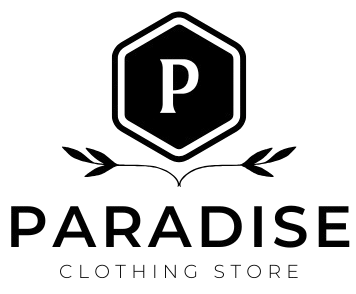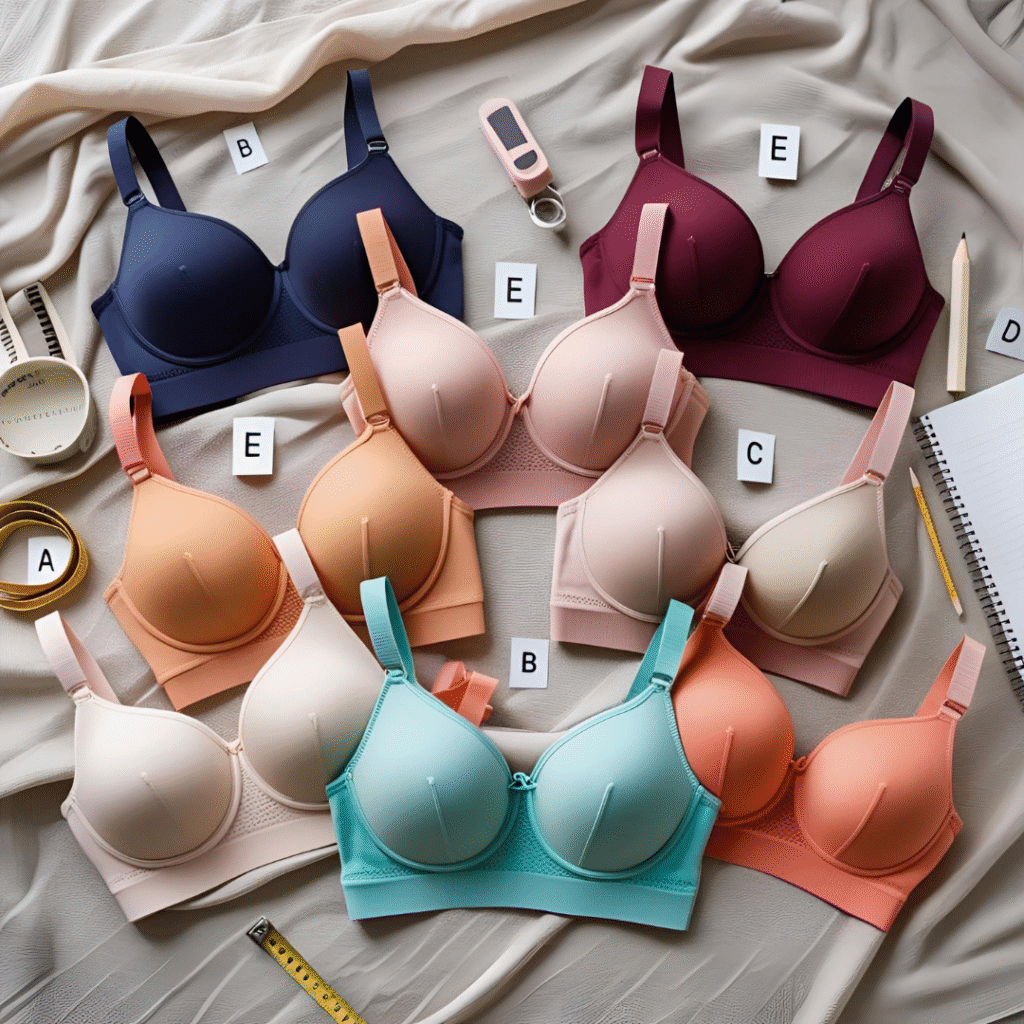Ever glanced at a bra tag and wondered what sorcery assigns your chest a letter of the alphabet? A, B, C, D—sure, they seem simple. But behind those letters lies a century-old system designed to solve a very intimate puzzle: how to support, shape, and fit the vast diversity of human bodies.
Cup sizes aren’t random or just for looks — they serve a real purpose. They’re a coded language for breast volume, comfort, and—let’s be honest—confidence. From the earliest days of structured undergarments to today’s tailored designs, those little letters have come a long way.
So let’s lift the lid—and the straps—on why bra sizes are measured in cups, and how this alphabet revolutionized the way we support the body.
A Quick History of Cup Sizes
Before Cups: The S/M/L Era of Discomfort
Before cup sizes, bras were as blunt as a one-size-fits-most t-shirt. Manufacturers relied on vague generalities—small, medium, and large—to cover an entire spectrum of bodies. The result? A generation of women forced to squeeze into bras that didn’t account for shape, fullness, or symmetry. Comfort was optional. Support? A luxury. Fit? Practically mythical.
The Birth of Cup Letters: Who Coined A, B, C, D—And What It Originally Meant
Enter the 1930s: S.H. Camp and Company introduced a radical idea—using letters to categorize bras. But this early system didn’t actually measure volume; it assessed how pendulous breasts appeared. So, a “C” didn’t necessarily mean larger—it meant more droop. Confused? So were women. But the idea of individualized sizing had arrived, and there was no going back.
Modern Evolution: How Volume, Not Just Shape, Revolutionized Fit
It wasn’t until Warner’s and other innovators refined the system in the mid-1930s that cup letters began to correspond with actual volume. By anchoring size to the difference between bust and band measurements, they created a formula that could accommodate both ribcage width and breast fullness. Suddenly, women weren’t just buying a bra—they were buying a fit. And bras began to work with the body, not against it.
The Science Behind the Size
Two-Part Formula: Band + Cup = Your True Fit
Bra sizing isn’t guesswork—it’s a calculated equation. The two essential variables? Band size and cup size. The band (the number) measures the circumference of your ribcage, while the cup (the letter) represents the difference between your bust and band measurements. Together, they form a precise map of your body’s dimensions, not just a rough estimate. It’s not about picking a pretty bra—it’s about engineering a wearable framework that actually fits.
What the Letters Measure: A Deep Dive into Volume Differences
Each letter in bra sizing reflects roughly a one-inch difference between your bust and band measurement. For example, if your bust is one inch larger than your band, you’re an A cup. Two inches? B cup. And so on. But here’s where it gets interesting: a D cup on a 32 band is not the same volume as a D on a 38 band. Cup size scales with the band—meaning the same letter represents different actual volumes depending on the number it’s paired with. It’s geometry with a purpose.
The Role of the Cup Itself: Why It Matters Structurally and Ergonomically
Cups do the heavy lifting—literally. They support your breasts, spread the weight evenly, and help avoid pain in your shoulders and back. A well-constructed cup shapes and supports, reducing bounce and maintaining comfort throughout the day. Without an accurate cup size, you’re left with gaps, spillage, underwire woes, or painful compression. Structurally, the cup is the cornerstone of bra engineering. Ergonomically, it’s the difference between a second skin and a daily battle.
Why Cup Sizes Work (And Why They Matter)
Fit First: How Cup Sizes Solve the “Same Band, Different Bust” Dilemma
Not all chests are created equal—and thankfully, bra sizing knows it. Two people can have the exact same ribcage measurement but vastly different breast volumes. Without cup sizing, both would be stuck wearing the same ill-fitting bra. Cup sizes allow for this critical variation, offering a more personalized fit that adapts to real anatomy. It’s the difference between a bra that simply wraps around you and one that actually supports you.
Global Sizing Systems: Standardization vs Regional Quirks
While the cup system offers a foundation for consistency, global standards are still a bit… well, cup-half-full. The U.S., U.K., Europe, and Asia all interpret cup sizes differently, with some countries introducing double letters (like DD or E) or varying measurement units entirely. So, a D in the U.K. may not be a D in France. Despite these regional quirks, the core logic—measuring volume relative to band size—remains universally recognized, making cross-border lingerie shopping at least possible, if not always simple.
Fit Flexibility: Accommodating Diverse Shapes, Sizes, and Needs
The brilliance of cup sizing lies in its adaptability. Whether someone has shallow breasts, full-on-top curves, asymmetry, or post-surgery needs, the cup system offers a matrix of options. It acknowledges that no two bodies are the same and builds flexibility into its design. This level of customization empowers wearers to find bras that don’t just fit, but feel like they were made for them—because in a way, they are.
Common Misconceptions About Bra Sizes
Mythbusting: “A D Cup Is Huge”—Not Necessarily
Let’s shatter the myth: a D cup isn’t inherently “big.” Cup size is relative to band size. A 32D and a 38D don’t hold the same volume—at all. The 38D has significantly more space than the 32D because cup size scales with the band. So, calling someone “big-chested” based on the letter alone is like judging height just by someone’s shoe size. It’s misleading, and frankly, outdated.
Sister Sizes Explained: The Mind-Bending Logic of Equivalent Fits
Welcome to the matrix: sister sizes. These are different bra sizes that share the same cup volume. For example, a 34C, 32D, and 36B all fit about the same breast size, but the band (around your body) is different.
in band size. It’s a lifesaver when your favorite bra is sold out in your usual size. But it also explains why your “size” might shift depending on the brand, cut, or even time of the month. It’s not you—it’s the system.
Why So Many Women Wear the Wrong Size? (Spoiler: It’s Not Your Fault)
Studies show most women wear bras that don’t fit—and it’s not because they’re clueless. The real culprit? Inconsistent sizing across brands, a lack of education, and outdated measuring methods. Add to that the embarrassment or confusion in fitting rooms, and you’ve got a recipe for chronic discomfort. The good news? With better resources, proper measurements, and a little myth-busting, finding your true fit is totally doable.
Conclusion: The Power of the Cup
From its humble beginnings in the 1930s to its modern-day role as a fit essential, the cup sizing system has transformed how bras are made, worn, and understood. It replaced vague labels with a logic-based framework that considers both ribcage and breast volume—making bras more supportive, functional, and tailored to individual bodies.
But here’s the real takeaway: bra sizing isn’t about chasing a letter or fitting into someone else’s standard. It’s about finding the structure that supports you—physically and emotionally. A well-fitting bra doesn’t just shape your silhouette; it lifts your comfort, posture, and self-confidence.
So don’t settle for guesswork. Get measured by a professional, try out your sister sizes, and understand how the system is made to fit your body better. uniqueness. The alphabet may be fixed—but your fit is flexible, and it’s yours to own.
Why Do Bra Sizes Include Cups?
Because breast volume matters.Cup sizes show how much bigger your bust is compared to your ribcage size (the band). Without them, bras would be a one-size-fits-none scenario. Cups ensure bras offer personalized support and shaping, not just a snug band around the chest.
How Often Should I Get Measured for a Bra?
At least once a year—or anytime your body changes. Weight fluctuations, pregnancy, hormonal shifts, or even fitness routines can alter your bra size. A regular fitting helps keep comfort, posture, and support on point.
Can Bra Sizes Change Over Time?
Absolutely. Bra size isn’t static—it evolves with your body. Aging, weight changes, pregnancy, breastfeeding, and even certain medications can influence both band and cup size. If your go-to bra suddenly feels off, it’s probably not stretched out—it’s just time for a remeasure.
Why Are Cup Sizes Called “Cups”?
Because they “cup” the breast—literally. The term comes from the functional design of the bra: a shaped section of fabric that holds, lifts, and supports the breast tissue. It’s a descriptor that stuck, and it perfectly mirrors the role they play.
Are There Any Cultural or Societal Reasons for Measuring Bra Sizes in Cups?
Yes, especially in Western markets. The cup system emerged alongside the rise of ready-to-wear fashion and mass manufacturing, offering a standardized way to cater to diverse bodies. It also reflected shifting cultural attitudes toward body image, femininity, and the importance of fit. In other parts of the world, alternative sizing methods exist—but the cup system remains the most widely recognized due to its practicality and global adoption.

